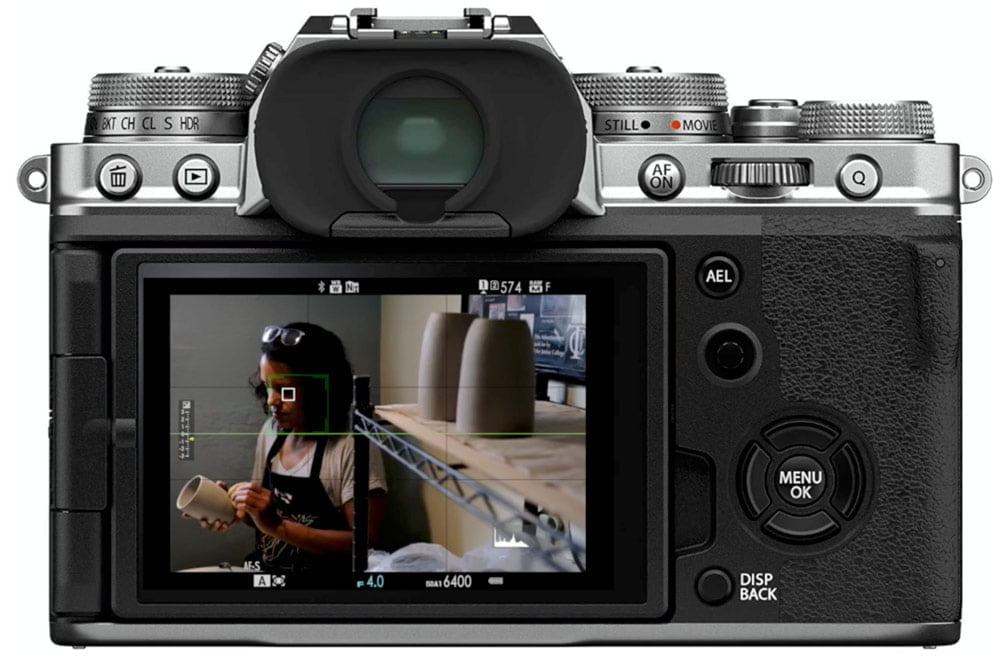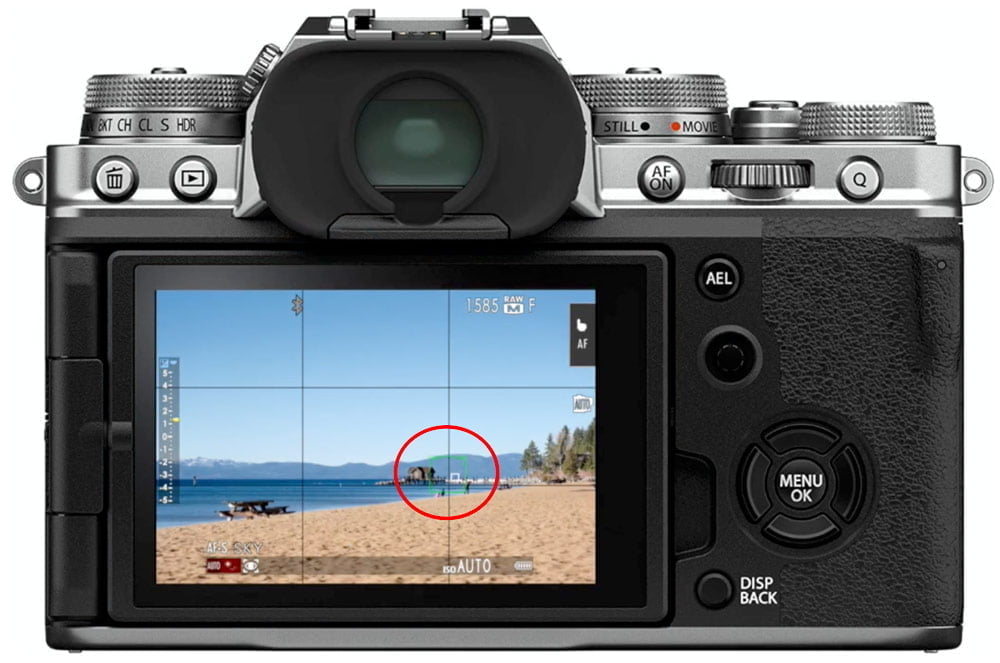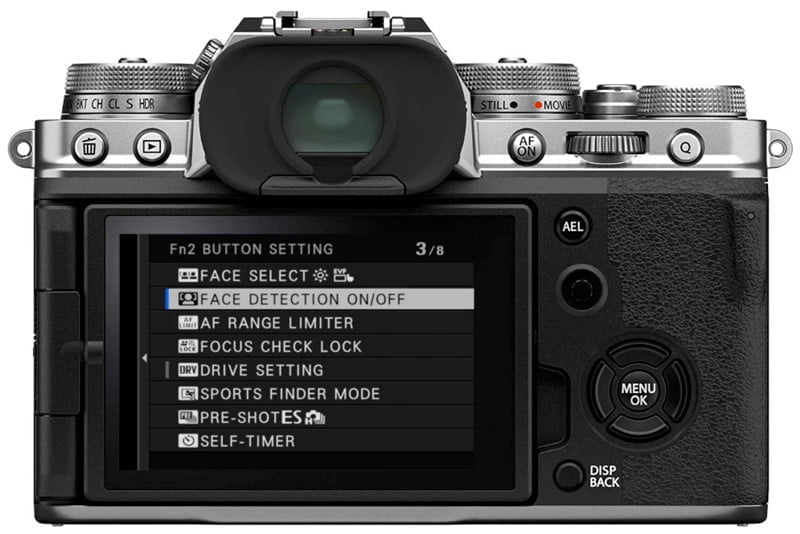Disclosure: This post may contain affiliate links. I earn a small commission of product sales to keep this website going.
This article, about the problem with face and eye autofocus, is a result of several recent in-person photography lessons in which the students couldn’t figure out why their photos were blurry. It signaled to me a trend/concern that I felt needed to be addressed to the greater photography community!
Face and eye autofocus is marketed as some sort of magic promise to always get sharp, in-focus eyes in all of your photos.
This is wrong – it’s just marketing.
You need to understand how it works, when it works, when it doesn’t work, and how to use it.
Background on Face and Eye Autofocus
Face autofocus (face AF) was introduced around 2007 and signaled a major step in camera artificial intelligence.
Cameras were programmed to detect patterns within the frame. When you think about it, it’s really quite simple. It just took some time to “teach” the cameras. Find two symmetrical things that look like this (eyes) above a nose that is above a mouth. Focus on that.
Photographers no longer had to put their focus point over their subject’s face, focus, and recompose if necessary. The camera would find the face anywhere within the frame and focus there, nearly instantly. A huge timesaver and, hopefully, an increase in focus accuracy.
Eye autofocus (eye AF) was the next logical step to face AF a few years later. If the camera can detect the pattern of a face, why not set the camera to focus on the small point that makes up the eye? After all, that’s where the human connection between the viewer and the subject happens. The eyes need to be sharp.

Some cameras can detect and focus on the closest eye, the right eye, or the left eye. Newer cameras have modes to detect animal eyes. Do you have multiple faces within the frame? The cameras also let you choose which of the several faces it detects.
In nearly all cases, face and eye autofocus isn’t just setting autofocus. It’s also setting exposure. If you’re in any automatic exposure mode (P, A, S), the camera will adjust those settings to ensure your subject is also exposed properly.
The problem with Face and Eye Autofocus
All of this technology sounds pretty cool, right? Face and eye autofocus systems let us concentrate our efforts on other aspects of capturing the image. We know that the faces & eyes will always be in focus thanks to this smart technology.
Well, no. It’s not that easy.
This whole system is predicated on the camera being able to recognize patterns that it’s been taught. While the technology is improving, it’s all based on what we humans have programmed into it.
It needs to detect a face
You’re composing your photo, waiting for the face and eye autofocus to pick up your subject slightly left of center. Seconds go by, and it feels like forever. Why isn’t it detecting the face? The person is right there! Focus, you stupid camera!
Well, if that person is wearing a hat and sunglasses, the camera might not be able to match that to its face recognition. All of that time you could have focused yourself is now wasted because you couldn’t understand why the camera wasn’t doing it.
Does your camera have animal eye recognition? Awesome! But guess what, it really struggles on animals with dark facial fur and dark eyes. To the camera, it’s just a dark blob; the outline of the eyes is hidden.
It will always try to find a face
It also goes the other way.
We taught the camera to look for a pattern. If that pattern exists elsewhere in your frame, like on a rock out in nature, the camera will say, oh hey, let me focus on that face for you, and adjust your exposure. While rare, this has happened to me before, usually right before I press the shutter button. I get an out-of-focus overexposed photo because the camera thought it saw a face that wasn’t there.
Maybe your subject is standing in front of a painting of a person, and for whatever reason, the camera detects the face in the painting but not your subject. Now you have to override the system, and this takes precious time.

The exposure!
Whenever the camera detects a face or eye – whether or not one is really there – it will recalculate the exposure based on your exposure compensation setting.
If your exposure compensation is deliberately set for something else, you’ll notice that it changes when the face and eye autofocus detects something. Now you have a different exposure than what you initially wanted.
Using Face and Eye Autofocus efficiently
These obstacles can be overcome, but it takes a conscious effort on your part to do it right.
All of this AI technology is honestly making photographers lazy and complacent. If the camera will do something for you, why do you care about knowing how to do it yourself?
No matter how advanced these systems become, they will never be 100% accurate. You need to be prepared for that 2-3% where it is not accurate and know how to respond.
Know the system
Study your camera’s manual if you plan to use face and eye autofocus. If you don’t care to learn about the system, do not use it. You can’t blame the camera if it’s behaving how it’s supposed to, but you never took the time to figure that out.
- When will it best detect a face or eye?
- Which situations will give it trouble?
- What happens when it detects multiple faces or eyes? What does it do automatically, and what do you need to do to change it?
- How does the exposure metering system work with your face and eye detection?
- Does “face” detection work differently than “eye” detection?
Program a button
How will you quickly override the system?
I gave two examples above where this is common. It detects a face that is not there, and it detects the wrong face but won’t detect the right face.
Most cameras allow you to program functions to custom buttons or have quick menus that you can access with functions you use regularly. Program these to enable or disable face and eye autofocus quickly.
Get in the habit of using this. If I’m photographing a portrait and am using face and eye autofocus, then I go to a landscape scene, I always disable the system. I do not want it even trying to look for a face when there is none in a scene.

Practice using & not using it
And that leads us into practice.
Athletes and musicians always run drills & warmups before a big event. You need to be doing the same.
If you’re going to rely on face and autofocus to do that job for you, you need to practice it.
This lets you know when the system works as advertised and when it doesn’t. You will recognize when it is and is not working. It will give you the muscle memory to quickly enable or disable it. You’ll also know how to quickly switch from one face to another where there are multiple.
It will teach you which apertures you can use in certain situations using the system. Some articles out there say that you can now open up your lens wide-open because you don’t need the “security” of having a slightly deeper depth of field. But is that really true for your camera? Practice to find out.
And most important, when it is misbehaving and you need to disable it, how will you focus then? How will you manually (using auto or manual focus) ensure the appropriate face or eye is in focus?
I hope this article helps you better understand the system’s limitations and prepares you for sharper photos. Please leave any comments or questions below.
